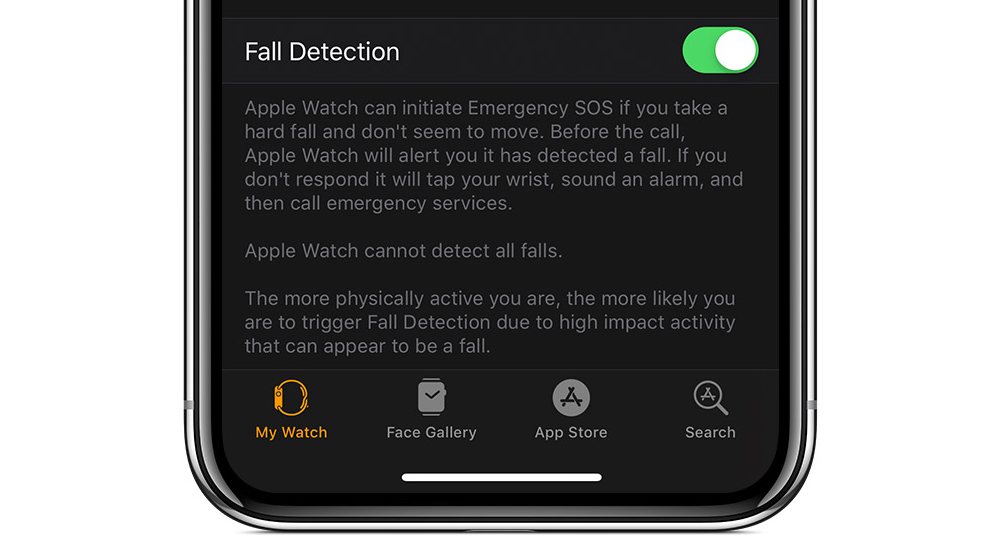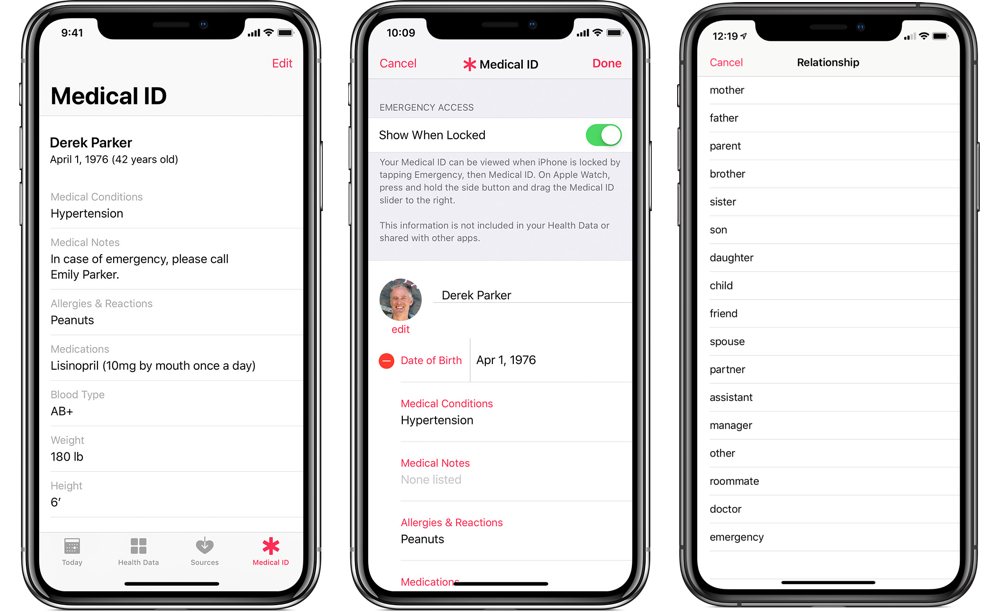Apple Watch Fall Detection Saves Lives. Here’s How to Make Sure It’s Enabled
 Credit: Apple
Credit: AppleToggle Dark Mode
While the ECG and other heart monitoring features on the Apple Watch seem to get the lion’s share of credit for saving lives, the Apple Watch Series 4 boasts another very important sensor that’s often overlooked: fall detection.
It was this feature that was credited with coming to the aid of an 80-year-old woman in Germany this weekend, detecting her fall and connecting her with emergency services, as reported by the Munich fire department.
According to the report, the Apple Watch automatically placed a call to 112, the German equivalent of “911” and played a recorded announcement to emergency dispatcher telling him that a person had fallen heavily and transmitting the GPS coordinates to the scene of the accident.
The police were able to use that data to identify an address and send an ambulance and render aid. The woman’s son was also simultaneously notified, since he was registered as an emergency contact, and he also came to her aid.
Although the elderly woman was shaken up enough that she was unable to answer the door when emergency workers arrived, requiring the fire department to enter the apartment by force, she was not seriously injured, and the paramedics were able to release her into the custody of her son.
However, the Apple Watch has already saved lives in considerably more serious situations, such as the case a Swedish man last fall who passed out from crippling back pain while cooking with the stove on and a young daughter in the house, or a 67-year-old Norwegian man who was found bloody and unconscious on his bathroom floor after emergency crews responded to an automated Apple Watch Emergency SOS call.
How to Make Sure Fall Detection Is Enabled
While Fall Detection is a great feature on the Apple Watch Series 4, what you may not realize is that it’s only enabled automatically for users who are over 65 years of age — based on the data entered by the user when the Apple Watch is originally setup. It’s also unclear whether it will be automatically activated on your 65th birthday, so either way, if you want to be able to take advantage of this potentially life-saving feature, you’ll need to take a trip into your Apple Watch settings on your iPhone and make sure it’s enabled:
- Open the Apple Watch app on your paired iPhone
- Ensure the My Watch tab is selected
- Scroll down to Emergency SOS and tap it
- Look for the Fall Detection setting and ensure it’s switched on
Note that there are valid reasons why you may want to leave Fall Detection disabled, especially if you regularly participate in high-intensity workouts. This may be why Apple has chosen to only enable it automatically for older users, however it’s also worth keeping in mind that Fall Detection will not send an emergency SOS signal immediately — you have to be immobile for over a minute before the fall detection even kicks in, after which a very noticeable and loud alarm will sound along with 30-second countdown before the emergency call is made, during which the process can be cancelled.
Add Emergency Contacts
When triggered, Fall Detection will automatically place a call to the emergency services number for your country (i.e. 911), but if you want to also notify family members or friends, you’ll also want to set them up as emergency contacts. This is done from the iPhone’s Health app:
- Make sure the person you want to add an an emergency contact is already in your Contacts app.
- Open the Health app
- Tap the Medical ID tab in the bottom right corner
- Tap the Edit button in the top right corner
- Scroll down to the Emergency Contacts section
- Tap Add Emergency Contact
- Select the person from your list of contacts (note that only contacts that include phone numbers are selectable)
- Tap the person’s mobile phone number (if they have more than one)
- Select your relationship to the person from the provided list
- Tap Done in the top right corner.
If you have one or more emergency contacts listed, they will each receive a text message notifying them that there’s a problem, along with a link to your current location, so you’ll want to ensure that you use a mobile phone number for each of your emergency contacts.








